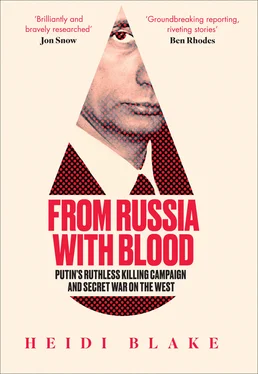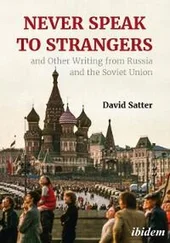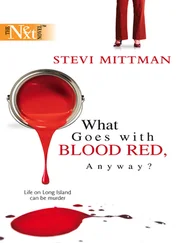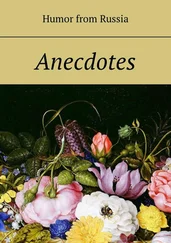Heidi Blake
Introduction
Salisbury, England—March 4, 2018
The fog that enveloped the city overnight had cleared by lunchtime, revealing the cloud-tipped spire of Salisbury Cathedral to the smattering of Sunday diners ambling up Castle Street. The afternoon was cold and quiet, and a light rain was fizzling on the medieval rooftops as two figures emerged from a columned restaurant door. The couple—a smart, plump, snowy-haired man with a blonde some decades his junior—would have gone unnoticed among the lunch crowd at Zizzi, where they had been washing down risotto with white wine, had it not been for his outburst midway through their meal. The pair left the restaurant suddenly after he flew into a loud temper, ducking down an alley and hurrying away from the marketplace, but their pace slackened once they emerged and crossed the bridge over the swollen river. Across the Avon lies a small tree-fringed playground where children were feeding ducks in the drizzle, and the man paused to press some bread he’d saved from lunch into their hands before the pair strolled on toward the edge of the green. It was here that they came to a sudden halt. Within minutes, passersby would stop to stare at a bizarre scene.
The man and woman were slumped together on a bench—she unconscious, he making strange hand gestures and apparently transfixed by the sky. As onlookers cautiously approached, the man seemed to freeze. Then the woman began convulsing, her eyes white and mouth foaming.
The Sunday shoppers who rushed to help were unaware of the seismic global significance of what was unfolding before them. This was the latest salvo in a secret war being waged on the West by a hostile foreign superpower, and their peaceful Wiltshire city had become a battleground: the site of the first chemical weapons attack unleashed on European soil since the Second World War. Still more alarming, the good samaritans themselves were being exposed to a lethal poison even as they stood on the green sheltering the stricken pair under umbrellas while they waited for paramedics.
The couple on the bench were Sergei Skripal—a former Russian spy turned double agent for MI6—and his thirty-three-year-old daughter, Yulia. Skripal, then sixty-six, had arrived in the United Kingdom eight years earlier, after being freed from a Russian prison where he was serving time for high treason. The onetime senior military intelligence officer had been convicted of selling secrets to Britain and blowing the cover of some three hundred Russian agents in 2006. He was released four years later, along with three other men convicted of spying for the West, in exchange for the return to Moscow of ten Russian spies caught living under deep cover in suburban America. The agents were traded on the tarmac of the Vienna airport in the biggest East-West spy swap since the Cold War—but no sooner had the Russian returnees stepped safely onto home soil than Vladimir Putin made his intentions toward the men he had released clear.
“Traitors will kick the bucket,” he announced on state television. “Trust me. These people betrayed their friends, their brothers in arms. Whatever they got in exchange for it, those thirty pieces of silver they were given, they will choke on them.”
The events unfolding on the green in Salisbury proved the Russian president true to his word. Sergei and Yulia Skripal lay choking on the bench as their airways were shut down by a deadly chemical that had been smeared on the door handle of his suburban home hours before.
By the time they were admitted to the intensive care unit at Salisbury District Hospital, the Skripals were both suffering convulsions as their lungs filled with fluid and their hearts slowed to a near stop. Doctors were initially perplexed, but when police informed them that the man in their care was a Russian turncoat living under British government protection, the symptoms began to make terrible sense. The Skripals were showing all the signs of having been exposed to a nerve agent—a military-grade chemical that attacks the central nervous system and causes the collapse of all vital bodily functions. These poison gases, fluids, and vapors are so indiscriminately deadly that the world had banned their development or stockpiling some two decades before. In the unthinkable event that the pair had been attacked with a chemical weapon on the streets of Salisbury, wouldn’t there be other casualties?
Those fears were compounded with the arrival of a new patient in intensive care. Detective Sergeant Nick Bailey was a decorated officer of the Wiltshire Police who had been deployed to search Sergei Skripal’s home, and he had been hit with all the same symptoms as the spy and his daughter. Soon after, two more police officers were admitted with itchy eyes and respiratory difficulties. Then came the three children who had taken handfuls of bread from Sergei Skripal to feed the ducks and an off-duty doctor and nurse who had rushed to administer mouth-to-mouth to the Skripals in advance of the paramedics arriving. Before long, twenty-one people had presented with signs of nerve poisoning.
It looked abundantly clear that a deadly chemical had been used to attack the Skripals—indiscriminately endangering the lives of potentially hundreds of British citizens. The medics in Salisbury District Hospital braced themselves for an all-consuming public health crisis while counterterrorism officers from Scotland Yard swept in to take over the investigation from the local police and 180 military personnel were deployed alongside specialist investigators in white protective suits to comb the streets for traces of a nerve agent. But without identifying the exact chemical that had been used in the attack, it was impossible to know where it had come from—or how its awful effects could be treated.
To the northeast of Salisbury, encircled by barbed wire and set in seven thousand acres of open land, is a sprawling complex of windowless labs and bunkers that harbors some of Britain’s most closely guarded secrets. The Skripals had been poisoned just a few miles from Porton Down, home to the British government’s Defence Science and Technology Laboratory, one of the world’s foremost centers for research into chemical and biological weapons. As soon as medics spotted the signs of possible nerve-agent poisoning, samples were taken from the Skripals and rushed to the top-secret laboratory for testing.
It did not take long for the government scientists to identify the poison. This was a pure strain of Novichok—a chemical weapon as deadly as it is conspicuously Russian—and researchers at Porton Down had been studying nerve agents like it for years. The toxin was developed in the 1970s and 1980s under a Soviet program code-named Foliant at the Shikhany military research base, in southwest Russia. The existence of the Novichok stockpile was exposed by two Russian state chemists in 1992, just after the collapse of the Soviet Union and just as the country was signing on to the Chemical Weapons Convention outlawing the development and retention of chemical and biological weapons—and MI6 had been gathering intelligence about its adaptation for use in targeted assassinations ever since. The discovery that the Skripals had been poleaxed by this distinctly Soviet poison was met with stark astonishment. This wasn’t just a covert attempt to liquidate a traitor and settle a score: it was also a deliberately overt act of aggression. The poisoning of Sergei and Yulia Skripal was a message, and the return address was clear. The Kremlin.
The prime minister needed to be briefed. Theresa May called her intelligence chiefs to a meeting, where she heard evidence that Putin had sent state agents to exterminate the Skripals on British soil. MI6 had compelling intelligence that the Russian president had personally overseen a program to repurpose an arsenal of chemical and biological weapons, including Novichok, for use in targeted assassinations over the past decade. Specialist hit squads had been trained in the use of nerve agents to target individual enemies of the Russian state—and they had been specifically taught to smear the chemicals on door handles, where the highest concentrations of Novichok were identified in samples taken from Sergei Skripal’s home. Russian spies had been showing an interest in the Skripals as far back as 2013, when the country’s military intelligence unit had hacked multiple email accounts owned by Yulia. More alarmingly still, Sergei’s wife and son had both died suddenly in the years since the family relocated to the UK, and there were suspicions that they, too, may have been poisoned.
Читать дальше












